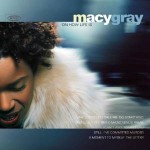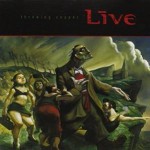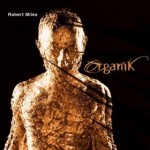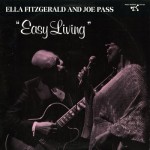Back in early September of this year I was speaking with good friend and audio-visionary, Jonathan Weiss, of Oswald’s Mill Audio (OMA). He had been contacted by one Mr. Jonathan Levine, founder and CEO of Master & Dynamic. Mr. Levine had found out about OMA after being sent a link by his son pointing to a feature on JayZ’s website, Life+Times . Intrigued by the special aesthetic that Weiss achieved with his line of electronics and loudspeakers, he thought he had found a kindred spirit, and visited Weiss at OMA’s Brooklyn showroom loft. While enjoying the whole OMA experience he and Weiss began to talk about Master & Dynamic’s business – namely, headphones. As a result of that conversation, Weiss suggested that Levine get in touch with Headphone.Guru about the potential for review coverage here – and that’s how this story begins.
Soon after email contact with Jonathan Levine I received a package with their flagship headphone, the MH40, as well as the MH30 (reviewed by Dubstep Girl earlier this month), and an IEM that was sent up to Arly Borg in Winnipeg for some considered listening and reportage. I had seen photos of the MH40 before, most notably in Steve Guttenberg’s coverage for CNET, and thought they were kind of sexy in a retro way. But for the $399.00 price I wasn’t sure that they would be built to a high standard. After all, these are aimed at a decidedly “consumer” crowd, which often tends to mean the need to get into a lot of retail doors and survive on small margins while – retailers tend to demand big margins, especially when they’re big name retailers.
What arrived eclipsed the limits of my imagination, for these were built to a high standard and with high end materials galore. From the real leather earpads and headband, to the chromed earcup posts (with graduated positioning guides!), to the forged aluminum earcups with magnetic earpad attachment … this was quite the class act and clearly the result of some considerate attention to detail. It was the first listen, though, that gave me the best surprise – and I felt compelled to write to Jonathan and let him know that the MH40, fresh out of the box, was delivering a delightful balance of luscious midrange, bass kick, and a nice spaciousness that helped render ambient and experimental-electronic tracks especially immersive.

In October I brought these to the Rocky Mountain Audiofest – not at all ashamed of having these “consumer” cans ’round my neck, because I knew at that point they were the real deal and would be happy to demo them for anyone curious enough to ask. But it was when I brought them upstairs to my fellow-scribe Mike Mercer’s hotel room that I got a chance to hear them on the Cavalli Liquid Crimson being fed by Mercer’s Macbook/Amarra system. Another brother of the pen-and-wit was there, one Mr. Pete Davey, and we all took turns listening to the combo and groovin’ deep on Mercer’s playlist. That was a sweet session, I tell you, because it demonstrated to me that the MH40 could hold its own when being fed by gear that hovered way above its stratum.

From that point forward it became my daily-driver, whether I was at my desktop or in my workshop. It’s constant companion was the iFi iDSD Micro from iFi that I bought at the CanJam from Darren Censullo – iFi’s North American importer – a piece for which much should (and will) be said in the future, but suffice to say for now that it’s a high-stepping DACAMP that fires on all cylinders. Little by little the MH40 began to break in, stretch its legs, and develop its sound more fully. Midrange magic improved, the somewhat reticent highs began to twinkle and shine a little bit more, and the bass began to dig a little deeper. Its weight and comfort factor were such that I could wear it for hours and not feel fatigued or sore, which led to long listening sessions – even beyond the bounds of my desk and shop. The iDSD Micro has a nice, beefy battery and if I feed it from the AK120 II I’ve got umpteen hours of my favorite music in my pocket – though, to be completely frank about it, one has got to have fairly large pockets to fit the combo in there. No “skinny jeans” will work.
One of my rituals has been to load up this pocket system with the MH40 in the morning. My wife gets the kids ready for school, loads them into the car, and drives them off around 8am. That’s about an hour’s round trip for hem, which gives me the chance to get in the kitchen and do some “juicing” – no, I’m not injecting steroids. We’ve been drinking fresh juices in the morning, mostly veggies with a couple apples thrown in for sweetness, in order to try and get back on a healthy track. It takes a little bit of time to prep and wash the veggies and apples, and then feed them into this slow juicer that uses a horizontal augur to crush and squeeze every last bit of juice out of whatever you feed into it. It can get tedious, but once I’ve got my tunes going the tedium is washed away and I’m enjoying every minute!

Recently a new service was introduced to the USA: Tidal. This has only made matters worsebetter for music lovers like me, because now I can get full-resolution streaming of so many different kinds of music and such a variety of artists that it is a difficult thing to put down. Recently I’ve been listening to a lot of old Jazz, and so my playlist has been swooning with sounds from Kenny Burrell, Joe Pass, The Hot Club of Cowtown, Bucky Pizzarelli, Kenny Dorham, and many others. Some days I listen through whole albums and simply dig on the one aesthetic, other days I like to mix things up and have a playlist with a grab-bag of Jazz artists rolling randomly.
When it comes to Jazz, I doubt I will ever get enough – and between my high-resolution needle drops stored on the Ak120 II and Tidal, I’ve got a few lifetimes’ supply to immerse myself in – and with the MH40, “immersion” is the word. They have a midrange magic that envelopes my head, especially when it comes to horns of all kinds, as well as the evergreen “female vocal” tracks that wander in for an occasional spotlight in the queue. I can’t think of another sub-$400 headphone that gets tonally rich and harmonically complex music as right as the MH40. Maybe there’s one out there, but I haven’t heard it … and in that sense, I think the MH40 is able to stand toe-to-toe with some much more expensive options out there.
Will it take down an Audeze or a MrSpeakers Alpha Prime? No … but it wont’ necessarily be embarrassed in that company, and it seems to me to be a lot more “commuter friendly” in terms of size and style than those other options. From my own experience, I think it wipes the floor with popular consumer options from the usual suspects that you might see lined up in the Apple Store (for instance), and I suspect that it will come down to a matter of taste when compared to audiophile darlings like Grado.
The down and dirty testing was done with the iDSD Micro from iFi being fed high resolution files via Amarra 3.0, as the iDSD Micro is a phenomenal performer, especially considering its $499 price point, and seemed to me to be also price-commensurate with the MH40. I’ve got my panoply of test-tracks that I keep bristling in the stable, ready to show me what any set of cans is capable of once I decide to turn a critical ear toward the victim -er- device under test.
On we go …
MH40 Under Test
One of the first things that one might notice about the MH40 is that it tends a little toward the smooth side, which makes the high frequencies a little bit reticent but not missing in action. I’m still getting a nice rendering of HF that lends the kind of harmonic radiance needed for things like cymbals, plucked strings, and the complex texture of brushed snare. Still, there are occasions when I wish there was a little bit more air and space rendered – but the truth is that those occasions are rare, and my complaint is much more of a nitpick than a finger-wag.
Midrange is succulent, and better than I tend to think it should be given the price-class of these cans. Perhaps it might seem slightly forward, depending on the instrumental balance in the mix, but that slight voluptuousness – that roundness in the hips – makes the MH40 far more of a delightful guilty pleasure than some of its bony-assed competition at higher prices. I like a little bit of junk in the trunk when it’s tasteful and sexy, and MH40 brings just enough zaftig to make things immersive and succulent.
The bass and lower bass performance is something yet again, as the MH40 brings some serious heft to the table without overwhelming. When it comes to what we often consider as “consumer-grade” cans, it seems that low frequency gets pushed forward at the expense of everything else – as an almost cynical confession about target market, and how young people tend to prefer music with heavy bass as the feature. These cans make the case for bass, but without sacrificing the rest of the spectrum. They deliver deep, satisfying LF in a slightly heavier dose than headphones we might ordinarily consider to be “neutral” – but not so much that they take the joy out of more complex music.

Take “Tropicana Nights” for example, as it demonstrates quite a bit of complexity. It’s a 96k Chesky recording of Paquito D’Rivera and his big band orchestra, and some of my favorite music. High energy, amazing latin rhythms, and a high level of musicianship that earned the “Best Latin Jazz Album” at the first annual latin Grammy Awards in 2000. The bass in this mix reaches deep (though the bass drum is a little further back in the mix), and with lesser cans the bass can seem far too forward – standing out like a sore thumb. Not so with the MH40, which delivers satisfying LF while still rendering the glorious hugeosity of a massive brass orchestra, replete with explosive latin percussion, in one of the most energetic recordings I’ve ever heard.

Where the LF can seem overwhelming at times is with recordings that are already mixed with a fat bottom end. Macy Gray’s “I’ve Committed Murder” (1999, On How Life Is) is a good example of this, especially as it opens. The bass line is heavy and comes off as being a little bit overblown and floppy and in need of control. MH40 might not have the kind of control that this kind of fatness needs to strike a balance, and the bass tends to call a lot of attention to itself at the expense of the rest of the track. This is one of my “problem” tracks for precisely this reason, as this is much a “commercial recording” with all of those typical flaws we think of when we use that term disparagingly. Highly compressed, heavily balanced toward the bass, and as it builds complexity it gets to be a hot mess.

Another recording that calls up the “commercial recording” ill is Live’s “I Alone” from their album Throwing Copper (1994, Radioactive Records/MCA), but in this case it’s not a problem of bass, which balanced well in the mix. It’s an issue that crops up with most popular music that has been victimized by the Loudness War. This was a favorite tune of mine back in the early/mid 90’s for its swelling anthemic explosiveness – a guilty pleasure that lures you from the introspective to the extravagant, a real rocker. The music goes from a gently-strummed opening of guitars, bass, drums, and a softly emotive vocal, and there’s no overt over-compression going on here. But then the tune swells into its refrain, a huge explosion of distorted guitars and big-bang drumming, and it’s a little of an anti-climax as the dynamic contrast between these sections is almost non-existent. When transitioning out of the verse into the rocking refrain, or out of the bridge and back into the refrain, I crave a big shift in dynamics … and the recording fails to deliver. This kind of criminal compression might save the song for a consumer-grade boom box or a car stereo, but for good Hi Fi and headphone listening it shows up as a bird’s nest of confused mishmash. In this way, the MH40 shows itself up for a well designed headphone, revealing (without much by way of mercy) how poorly mixed and compressed this album is.

By contrast, here’s not as much compression evidenced on PJ Harvey’s “50ft Queenie” from her album Rid Of Me (1993, Island Records), so when the opening starts out tame enough with a solo electric guitar in the right channel you’re lured into kind of a relaxed posture – and then you get body-slammed as the band detonates into the body of this high-energy rocker. You get set up again at the bridge when things get a little smaller, and then – kapow! – she gets you again, and the energy carries you through the end of the track.

Where the MH40’s generous LF is a blessing is with electronic music, of which I’ve no small collection. Some of it is danceable music, some of it experimental, some of it ambient – but all of it seems to benefit by the ability of the MH40 to deliver a little extra dose of LF goodness. Robert Miles’s track “Endless” off of his album Organik (2000, Salt Records) is a kind of chill track that is a fun listen in headphones. Elements of middle eastern instrumentation and scales are used with synthesizer swells and deep bass to massage your ears without overloading your head. Lots going on, but tastefully managed. Compression artifacts show up here and there, but there’s enough room in the mix that it doesn’t seem like you’ve been caught in the whir of an immersion blender. The track leads you gently into the throng of beats, and then again gently out as swirling synthetic tones and vibes enchant the air – luring you into a brief sarangi solo, tambora droning in the background – and then fading gently into silence.

When things are recorded and mixed well, the MH40 shines – especially when it comes to a beautiful vocalist, bowed instruments, and resonant instruments of all kinds. I’m thinking here especially of the Joe Pass/Ella Fitzgerald duet on “Don’t be That Way” from their duet-album: Easy Living (1986, Pablo). As demonstrated in three prior duets with Ella, Joe Pass’ guitar is the perfect compliment to her stellar voice. I’ve read that this is not considered to be one of her best, and I beg to differ. There’s something special about this performance of hers, at least for me, and though this particular track is a scant three minutes long, it’s worth savoring. Sure, the joint may be a little saturated with a little more reverb than I might prefer if i were to be nitpicky again, but the truth is I can listen to this album over and over – and I’ve found that the MH40 is a delightful instrument to use when indulging. These kinds of small duets are not necessarily gimmes, as there is a boatload of texture, dynamic contrast, and harmonic radiance all packed into this seemingly simple (but deceptively complex) recording.

The same is true for “audiophile” recordings such as “Vuelva Al Sur” from Buenos Aires Madrigal (2004, MA Recordings). The track opens with bandoneon, plucked cello, and lute as Ximena Biondo’s gorgeous alto voice flows like wine. As with all MA Recordings ventures, “BAM” (Buenos Aires Madrigal) is rich with tonal beauty, resonance, texture, and gobs and gobs of naturally-recorded space. MH40 shows its midrange mastery here, developing delicious blossoms of gorgeous tone as the track grows from the simple, through the bridge to the quite complex, and then filling up the air with unfurling beauty worthy of every raised goosebump.

MH40 does “big” symphonic music surprising well. James Horner’s soundtrack to the movie “Glory” (1989, TriStar Pictures) is a beautiful recording, and the track I like to listen to most often is the opening track to the album, “A Call To Arms”. It is another example of how the composer can lure you into a gently simple and radiant beauty. Boys choir is backed by regimented snare drums, bass, gently bowed violins and violas, deeply-tuned bass drum, and a lone bass note on the piano.The track moves from the ethereal to the pastoral, and from the pastoral it explodes into the heroic – getting extraordinarily complex in terms of instrumentation, as the whole orchestra kicks into a fortissimo of magnificent and triumphal splendor … only to fade like embers into the night. This album is worthy of the best gear, and certainly reveals far more to its astonishing beauty with much higher priced cans, but the MH40 is far from embarrassed here. Sure, it might be a little bit overwhelmed in the densest parts of this track – but it would be unfair not to mention that almost every headphone I’ve used gets a little flummoxed here and it has taken the truly world-class to come out of it unscathed.

As a final guilty pleasure, I have to call up System of a Down’s “Aerials” from Toxicity (2001, Alternative Metal). When it comes to badassness, I love to turn to this record as it’s one of the few I used to use to up my aggression in the gym. Want to add 10% to your lift? Listen to “Prison Song” and you’ll find it. “Aerials” is a favorite of mine for its composition dynamics, though. Starting with a melodic bass line that might be at home in Peter Hook’s hands, coupled with cello, as it transitions into the slowly churning metal vibe that’s emblematic of System’s ability to temper the otherwise boiling pace of Toxicity. “Aerials” lends a little bit of the stadium-rock element to the otherwise punkmetal throbbing that drives this album. Not that I could imagine Freddie Mercury belting this one out, but I can imagine Serge Tankian taking more than a page or two from Freddie’s playbook. Deliciously crunchy, and MH40 delivers all the high-powered texture I could want.
CONCLUSION
Master&Dynamic’s MH40 was surprising to me. When I first heard about it I wondered if it was another pretty face, well built with interesting and useful features (such as the mute button on the right earcup, magnetically-adhered earpads, and the carefully implemented adjustable stems), but a pop-market tonal balance that would make it competitive with large pop-market players like Beats by Dre. What I discovered was a thoughtfully-balanced headphone that might tend to be slightly drawn back in the HF occasionally, fully developed in the Midrange without getting overripe, and satisfyingly able in the LF region without taking over the scene with gobs of unwelcome thumping.
As a first effort by the freshman team at Master & Dynamic, the MH40 does more than merely acquit itself in the consumer space – it schools a lot of players who are swimming around this price range, showing a level of agility and sheer class that should be lessons to the bigger players that might otherwise be leaning on their branding to sell cans. They better watch out, because Jonathan Levine’s team at Master & Dynamic are bringing the kind of A-Game that breaks through branding and skewers sharks.
MH40 is my “Under $500” Headphone Pick of the Year!















Reply
Reply
Reply
Reply
Reply
Want to join discussion?
Feel free to contribute!